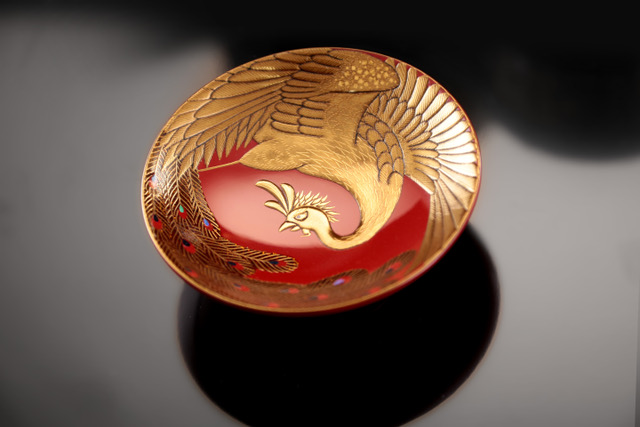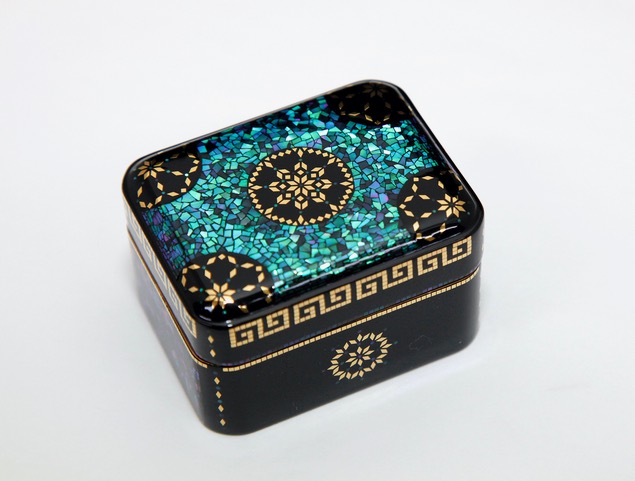MONTHLY LETTER
| 01 | 02 | 03 | 04 | 05 | 06 | 07 | 08 | 09 | 10 |
01
A Short History of the Art of Makie
Takeshi Matsuyama is an artisan who creates modern works using traditional techniques that are centuries old. His life is devoted to creating objects of art known as Maki-e. This art involves applying gold or silver to lacquer, intricately, painstakingly, over long periods of time, with a great deal of patience and focus. It’s a bit like watch-making in a high-end Swiss atelier in that the work requires enormous, sustained focus, and each resulting object is specific and unique. What is the story of maki-e? And what can we learn about it today?
Takeshi Matsuyama (™): According to some art historians, maki-e started almost 1300 years ago, around 800 C.E.
™: It’s a bit uncertain. Lacquerware, developing as a Japanese original art, has a history going back about 9000 years, and has its origins in China. The method of maki-e is, I think, chiefly Japanese alongside lacquerware.
™: Well, we’re not sure where it first started, but it’s fair to say that it rose to prominence in Kyoto, which was the imperial capital. At the same time, the Chinese ways of using lacquer and porcelain, this is about 800 years ago, were known in Kyoto so it’s likely that the artisans in Kyoto, in a broad sense, learned from them.
™: That’s right. The top, top people lived there.
™: Yes and no. The key point or element of maki-e is that the lords and the Buddhist temples supported the work. That was key.

™: Back then, in Japan, it was so hard to change one’s profession or position in society. So if you were not born into a maki-e making family, it was almost impossible to find a good master.
™: I would be happy to have you an an apprentice! But it would take me three years to teach you the basics. To become advanced? Another two years.
™: There is only one way to become a maki-e artist. The person has to have passion and heart: those are the key elements for an apprentice who wants to really learn and become better. And of course: it’s a very delicate craft.
™: First of all, thank you for asking that question. As you know, not only maki-e making, but cultural traditions are disappearing. I’m hoping that we continue to take traditional techniques for maki-e making seriously while at the same time trying to adapt to new lifestyles. That adaptation involves crafting jewelry, for example. And for me, most importantly, the willingness to keep challenging myself: To try to get better at technique and method.